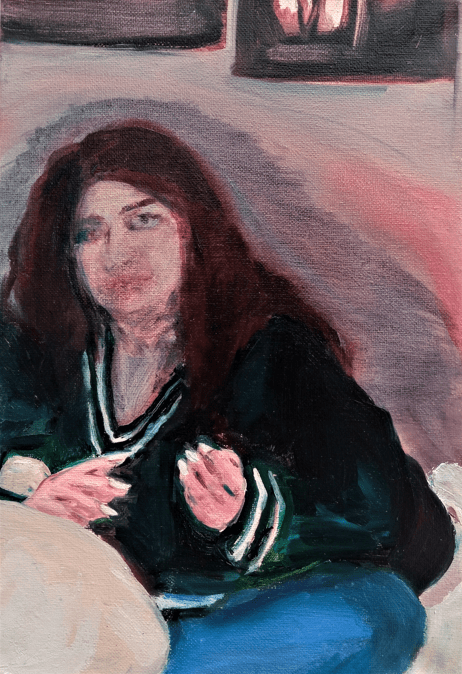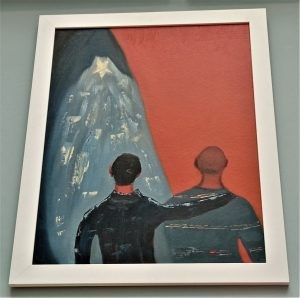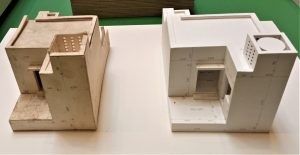- Saturday, July 27, 2024
Asian artists feature in summer show which also marks Windrush milestone

By: Amit Roy
Eastern Eye readers who missed out on the Chelsea Flower Show have a chance of catching up on something else that heralds the start of summer (although we haven’t exactly had a heat wave in the past few days).
This is the Royal Academy’s Summer Exhibition.
Out of 15,000 submissions, 1,602 art works were selected for display by the hanging committee. That is a lot to take in, if you proceed room by room. My method is to do a brisk tour of the entire exhibition, make a mental note of the ones I want to look at more closely and then go back and spend a bit of time with my chosen art works.
However, before I do that, I glance through the names in the Summer Exhibition List of Works and pick out the Asian names to check for diversity.
First stop. Are there any Patels? There is a Patelli, Lidia, but there’s no Patel. Perhaps, next year.
I next check to see if my friend Shanti Panchal has an entry. Sure enough, he has one – a watercolour, Easing Lockdown. I find his distinctive water colour high up on a wall. Then, I go slowly room by room looking at the submissions I have selected.
They include Munisha Gupta’s oil painting, Anxious Fingers; Satwant Singh’s oil on board, We are one; Angela Braven’s acrylic, Wedding Procession; Village Cricket, oil and spray paint on board by Archie Franks; and Ben Johnson’s acrylic, I’timad-ud-Daulah, a Mughal mausoleum in Agra, built between 1622 and 1628 and called the “Bachcha Taj” (Baby Taj).

Since 2023 marks the 75th anniversary of Windrush, it is fitting the Summer Exhibition has paid tribute to black struggle. There are three evocative black and white photographs from Sir Horace Ové, the Trinidad and Tobago-born British filmmaker who is now 84. One shows the late Darcus Howe, a central figure in the black response to high handed police behaviour at the Mangrove restaurant in Notting Hill in 1970. Royal Academician Anthony Eyton, who normally paints the ghats in Varanasi in India, has an oil, Protest and Survive, featuring a “Black Lives Matter” banner in the crowd.
In the room devoted to architecture, I was intrigued by Angus Taylor’s ink and pencil map of Korail Bosti, the biggest slum in the Bangladesh capital, Dhaka. As in Dharavi, Mumbai’s biggest slum, there is a structure to bosti (Bengali for slum) life.
The room also shows the model used for building community housing in Ahmedabad in Gujarat in India, with construction work done in temperatures reaching 48°Celsius.
In the final gallery, Richard Malone has created a “spectacular, immersive mobile entitled, poem in the dark about sadness, filiocht faoi bhron, as an dorchadas. This is described as “sculpture in hand bent metal bar, primer, high tension wire, hand sewn recycled jersey, polyamide, lycra, recycled silk, cotton thread”.
Personally, I incline towards landscapes and favoured the corner depicting trees, an allotment, and greenhouses. If I had the choice of one painting to take away and put above my desk at home, it would be Royal Academician Diana Armfield’s oil, Ash Trees over the Nanthir, a scene in rural wales. Art must be good for her. She will turn 103 on June 11.

This year’s Summer Exhibition, the 255th since the show began in 1769, is being “coordinated” by the 80-year-old British artist David Remfry, a Royal Academician, who has explored the theme of “Only Connect”, inspired by a quote from the 1910 novel Howards End by EM Forster. The famous phrase comes at the moment when the protagonist Margaret Schlegel resolves to replenish the soul of the conservative, complacent Henry Wilcox (a man “afraid of emotion”), whom she has settled to marry. “Only connect! That was the whole of her sermon. Only connect the prose and the passion, and both will be exalted, and human love will be seen at its height. Live in fragments no longer.”
Remfry has been helped by a committee that includes other Royal Academicians – Eileen Cooper, Bill Jacklin, Katherine Jones, Tim Shaw and Clare Woods. Peter Barber is curator of the Architecture Room. The committee is chaired by the president of the Royal Academy, Rebecca Salter.
Linked to the Summer Exhibition, but separate from it, colourful flags are being put up as part of “Art in Mayfair”.
One which will line Piccadilly has been designed by the Royal Academician Rana Begum.
The Royal Academy’s Summer Exhibition is open to the public from next Tuesday (13) until
Mrunal Thakur on Dhamaka, experience of working with Kartik Aaryan,…
Nushrratt Bharuccha on Chhorii, pressure of comparison with Lapachhapi, upcoming…
Abhimanyu Dassani on Meenakshi Sundareshwar, how his mom Bhagyashree reacted…